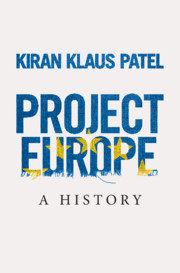Book contents
- Project Europe
- Project Europe
- Copyright page
- Contents
- Figures, Maps and Tables
- Abbreviations
- Frontispiece
- Prologue
- 1 Europe and European Integration
- 2 Peace and Security
- 3 Growth and Prosperity
- 4 Participation and Technocracy
- 5 Values and Norms
- 6 Superstate or Tool of Nations?
- 7 Disintegration and Dysfunctionality
- 8 The Community and Its World
- Epilogue
- Acknowledgements
- Notes
- Bibliography
- Index
7 - Disintegration and Dysfunctionality
Published online by Cambridge University Press: 24 April 2020
- Project Europe
- Project Europe
- Copyright page
- Contents
- Figures, Maps and Tables
- Abbreviations
- Frontispiece
- Prologue
- 1 Europe and European Integration
- 2 Peace and Security
- 3 Growth and Prosperity
- 4 Participation and Technocracy
- 5 Values and Norms
- 6 Superstate or Tool of Nations?
- 7 Disintegration and Dysfunctionality
- 8 The Community and Its World
- Epilogue
- Acknowledgements
- Notes
- Bibliography
- Index
Summary
Since the 1940s pro-European elites have embedded concrete steps towards European integration within a narrative that the member states were on the road to an ever closer union. The unification process was posited to be unidirectional and irreversible, resting on the twin motors of ever progressing deepening and enlargement. Nevertheless, Algeria managed to leave in 1962, as did Greenland in 1985. Long before Brexit, the narrative of the ‘ever closer union’ has also been called into question by other events and processes. For example, the Luxembourg compromise of 1966 ditched an integration step laid out in the treaty. A plethora of small and tiny changes also accumulated to disintegrate existing achievements or make them dysfunctional. The European Coal and Steel Community, for example, was largely non-functioning only a few years after its establishment. Overall, this chapter argues that disintegration and dysfunctionality are part of the political normality of the integration process. They are produced by the treatment of complex problems and knock-on effects of the integration process itself. The trend has strengthened further since Maastricht, and since the 1990s it has been shaping the debate over the European Union more strongly than ever before.
Keywords
- Type
- Chapter
- Information
- Project EuropeA History, pp. 209 - 230Publisher: Cambridge University PressPrint publication year: 2020

